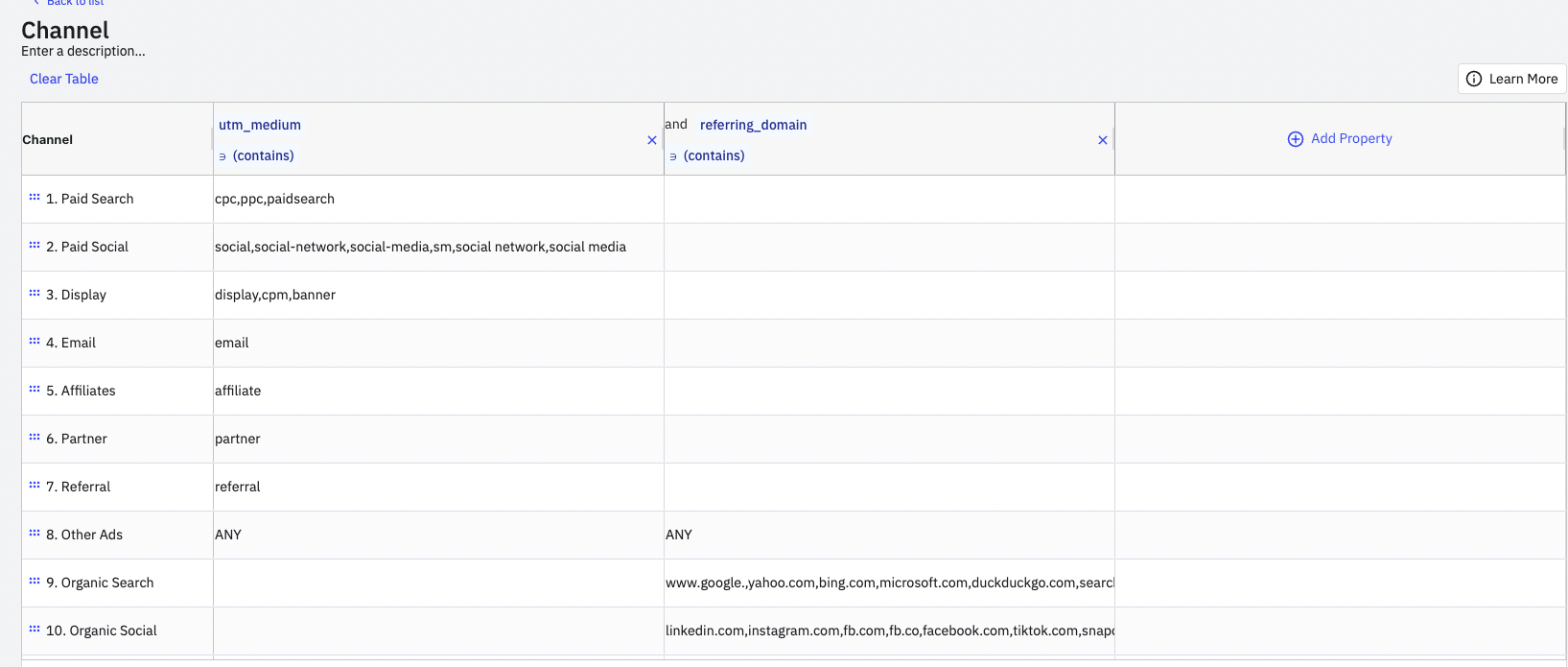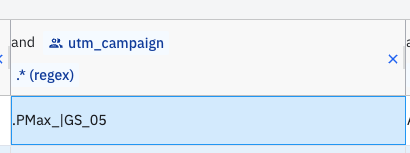Channel classifier
Amplitude's channel classifier offers the possibility to define acquisition channels that enables you to efficiently track your traffic sources. This article covers frequently asked questions about the channel classifier.
Are users notified if channel classifiers change?
Users and other admins aren't currently notified in this event. Any reports sourced from the channel classifier automatically updated to reference the most recent definition the next time someone loads or refreshes a report.Who can create and modify channel definitions?
What kind of properties can be used in configuring a channel?
Any (event, user, group) property can be used and mixed and matched in the definition. The channel classifier inherits the combination of the property types.Where can users use these acquisition channels after they are defined?
Are properties defined retroactively when a channel is created?
How can I upload a channel definition?
Why can't I see my channels in a Data Table?

Is the referring domain captured by Amplitude, or do I have to pass this value?
Should I be setting channel classifiers to include initial_utm and utm_ properties so that initial and most recent campaign traffic gets bucketed correctly?
Can I input a regex formula when creating a channel classifier?

Is the referring domain captured by Amplitude, or do I have to pass this value?
Why am I seeing '(none)' values when grouping by my channel in a Data Table?
July 18th, 2024
Need help? Contact Support
Visit Amplitude.com
Have a look at the Amplitude Blog
Learn more at Amplitude Academy
© 2025 Amplitude, Inc. All rights reserved. Amplitude is a registered trademark of Amplitude, Inc.